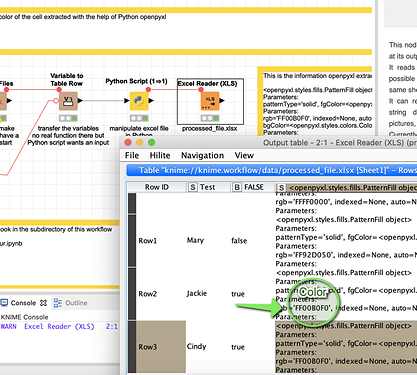Well, it is possible to do that with the help of Python’s Openpyxl (like with so many Excel manipulation tasks in and around KNIME).
Basically what happens is this:
- Import the Excel file into python
- activate the “Sheet1”
- find the edges, in this case, the no of rows
- iterate thru all of the cells with data in column A
- extract the style information (that was some piece of work)
- Store them in the corresponding column C
- check if the style information contains the specific colour we want to see (you could drop that once you are comfortable with the solution)
- if yes write TRUE if not FASLE into column B
- save the Excel file under a new name (so you might keep your original file)
- check the results
You could adapt that to more style information
Please note within the workflow is a subdirectory that contains a Jupyter notebook I used to first explore the functions. And it is possible that this is not the most elegant way  - I wanted to demonstrate that it can be done.
- I wanted to demonstrate that it can be done.
And yes. Excel offers a native solution to filtering such data. So another possibility might be to filter your data before loading it into KNIME.


